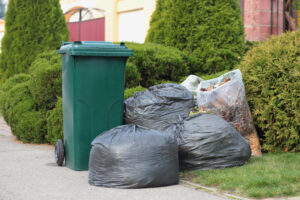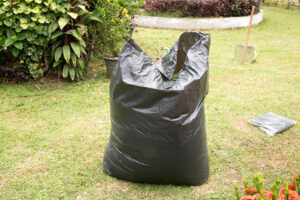Weather in Auckland can change fast from heavy downpours to long stretches of heat and sunshine. While that’s part of what makes the city and its gardens unique, these shifts in climate can take a toll on the tools we rely on to keep our outdoor spaces clean and tidy. If you regularly use a green garden bag, you’ve probably noticed how it can wear down after a few months. The way a garden bag holds up has a lot to do with where it’s placed and how it handles different types of weather.
Being aware of how weather impacts your garden bag’s condition helps in keeping your garden running smoothly. Long-term durability means fewer problems during collection days and less hassle trying to manage wear and tear. Especially at the end of spring and heading into summer, it’s a good time to think about how your bag is holding up and what steps can make it last longer.
Understanding Your Garden Bag’s Durability
A good garden bag can easily get years of use when it’s used the right way, but its lifespan often depends on what it’s exposed to. Auckland’s weather is known to swing quickly between intense rain, strong winds and bright summer heat. If your garden bag is constantly getting hammered by the weather, it’s likely to wear out faster than expected.
Rain can be one of the fastest culprits. Constant dampness and pooling water can weaken the stitching and base of the bag, especially if it’s sitting directly on soggy ground. This constant moisture can cause the frame to sink slightly too if the soil under it gets too soft. Over time, weakened fabric or slipping structure affects stability, meaning it might not stand tall or secure anymore.
Sunlight and heat can be just as tough. Auckland’s UV rays, especially during the longer days at the start of summer, have a way of drying out and fading material. Over time, even strong garden bags can become brittle in spots that are always under direct sun. This usually shows up around the top edges or corners of the bag where exposure is highest.
Wind sometimes gets overlooked, but it matters too. If your garden bag is in a spot where strong gusts are common, the material can twist, flap or even knock over the stand if it’s not anchored well. That kind of repeated stress on one or two sides wears away at the same points, breaking threads or weakening seams.
All of these weather conditions slowly add up. It’s not always one major event that damages a garden bag but a mix of little things over time. That’s why checking for signs like sagging, tearing or hardening fabric can help you stay one step ahead. A little awareness today can save you from messy surprises during collection week.
Choosing The Right Location To Store Your Garden Bag
Finding the right spot for your garden bag can really extend how long it stays in good condition. Placing it just anywhere in the yard sounds easy, but it’s a decision that has consequences, especially if you want to cut down on damage from rain, wind or heat.
Here are a few placement tips that can make a difference:
1. Pick a flat, stable surface: Avoid soft or sloped ground. A level space keeps the metal stand balanced and prevents tipping over or lopsided tension on the bag.
2. Keep it near a fence or shed: Having at least one side shielded helps reduce the wind load and cuts down sun exposure.
3. Stay away from under trees: Falling branches or heavy leaves can stress the material or fill it up faster than intended.
4. Don’t place it where water gathers: Avoid dips in the yard where water pools after rain. Constant dampness eats away at bag durability.
5. Rotate the bag’s position by season: If one side always faces afternoon sun or catches the wind, shifting its angle can balance wear.
A good example we often hear is from homeowners who initially place their garden bag near the back of the property, only to realise it’s in a wind tunnel. When they move it closer to a side wall or sheltered spot, they find the bag holds shape better, stays cleaner and lasts noticeably longer.
Taking a few minutes to think about setup can save future headaches. Even small changes, like moving the bag slightly or adjusting an angle, can mean better durability and less stress during extreme weather days.
Maintenance Tips To Extend Garden Bag Lifespan
Even when your garden bag is in a great spot, regular upkeep goes a long way. Just like any tool left outdoors, small checks and habits can stop bigger problems from showing up later.
Keep an eye out for wear and tear. Give the top edges and seams a quick look when you’re adding leaves or clippings. These areas are the first to crack if the material starts weakening. If dirt or moisture builds up on the surface, rinse the bag down and let it dry before the next load goes in. A clean bag lasts longer and doesn’t attract insects either.
Loading errors are another common cause of damage. It’s easy to overlook, but loading too much at once or placing dense green waste in one corner can strain the fabric. Spreading items out evenly keeps weight balanced and helps the bag hold shape. Always aim for a level fill that doesn’t come above the frame. Overfilling not only puts pressure on the stitching, but it also makes collection difficult.
The bag comes with a plastic string lock. Don’t tie it off with knots. The locking system keeps the top secure during windy weather, but still lets the driver access it easily. Knots often damage the loop holes and leave tears that widen over time.
Every now and then, inspect the metal frame too. While sturdy, a loose pipe or shift in leg position can cause uneven support. This makes the material sag or stretch in odd directions. A firm base keeps things in check and helps the bag sit squarely so it fills properly.
Simple habits like these become second nature once you build them into your garden routine. They don’t take much time, but they’ll keep your green waste setup running smoother from one season to the next.
Why Green Collect’s Garden Bags Stand Out
Not all garden bags are built the same. If you’re relying on one to handle Auckland’s spring winds and summer heat, it pays to notice which features actually make it hold up better outside.
A 600-litre garden bag, for instance, is made for heavy lifting. Its strong structure lets you store bulky items like shrub trimmings and small branches without the fabric bunching or tearing. Features that matter when weather is involved include:
– UV-resistant fabric that lowers the risk of sun damage and cracking
– Reinforced seams to keep heavy contents from ripping through
– A metal stand that supports the sides, helping the bag maintain shape
– Open access at the top so it doesn’t trap water in unexpected rain
– A design that prevents soft sagging, which helps avoid puddles and insects
Weather resistance also ties into how well the garden bag reflects use over time. A durable bag doesn’t warp or bulge after a few months of exposure. It stands tall every time it’s used, even if it hasn’t been emptied for a couple of weeks because of bad weather.
One clever move is having a breathable design that sheds moisture, not traps it. That’s part of what helps keep the inside from going musty or attracting bugs. Solid stitching and good corner support also make a visible difference after the first few intense summer weeks roll in.
When looking at garden bags for large spaces or heavy use, durability is worth paying attention to. The stronger the setup, the fewer headaches you run into as the weather shifts or collections become more frequent during peak growing months.
Staying Ready for Rain and Wind
Late spring in Auckland often leads into patchy summer storms with high winds followed by quick bursts of rain. That’s when a strong garden waste setup makes the most difference. A green garden bag that’s ready for wet and windy conditions helps prevent green waste from spilling or turning into a soggy pile.
If your bag’s in an exposed spot, think about where the wind usually comes from. Walls, fences or even garden features can act as buffers without blocking access. Always avoid slopes or dips where runoff collects. It’s quicker to adjust a bag’s spot now than to clean up soaked waste later.
Getting your setup storm-ready early also keeps collections on track. When bags become damaged or too full to close properly, our drivers may not be able to collect them. A good collection means nothing left sitting around during peak growing season.
Being ready doesn’t need fancy tools. A few small checks, seasonal tweaks and a properly placed garden bag do the heavy lifting when summer storms sweep through.
Your Best Bet for Lasting Garden Waste Solutions
Green garden bags play a big role in managing outdoor clean-up in Auckland, especially during spring and summer when plant growth picks up. But durability isn’t just about what the bag can hold. It comes down to where it’s placed, how it’s handled and the effort put into keeping it in good condition.
By placing your garden bag smartly, loading it correctly and doing small check-ups now and then, you’ll get far more use out of it. When storms hit or heat builds up, a bag that’s weather-ready won’t leave you dealing with split seams or soggy waste. Think of it as one small step that makes life easier and your outdoor space a lot neater.
Keep your garden mess-free this season with support from Green Collect. If you’re looking for a simple and durable way to manage green waste year-round, check out how using a green garden bag can make your clean-up easier and more reliable. With the right setup and collection plan, staying on top of your garden waste has never been more convenient.







